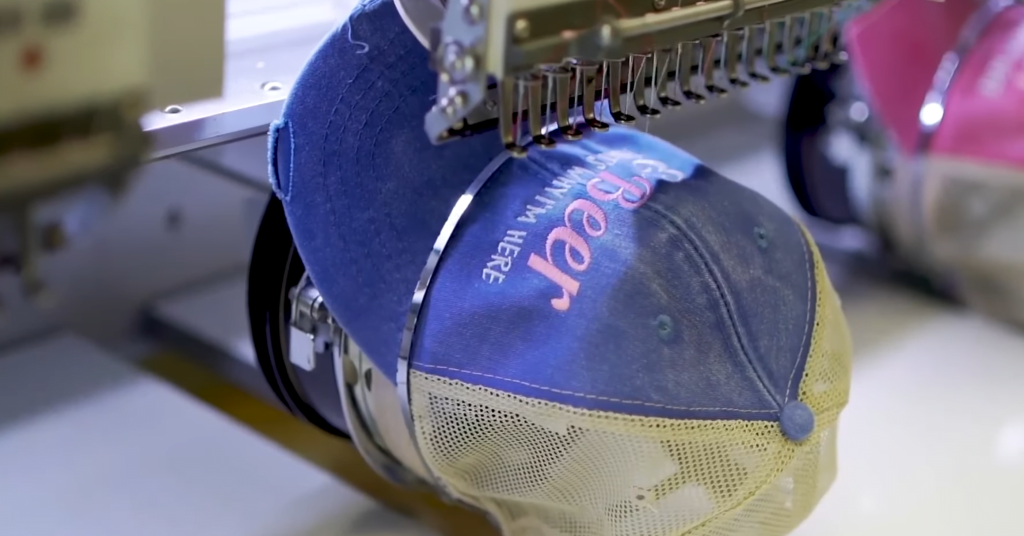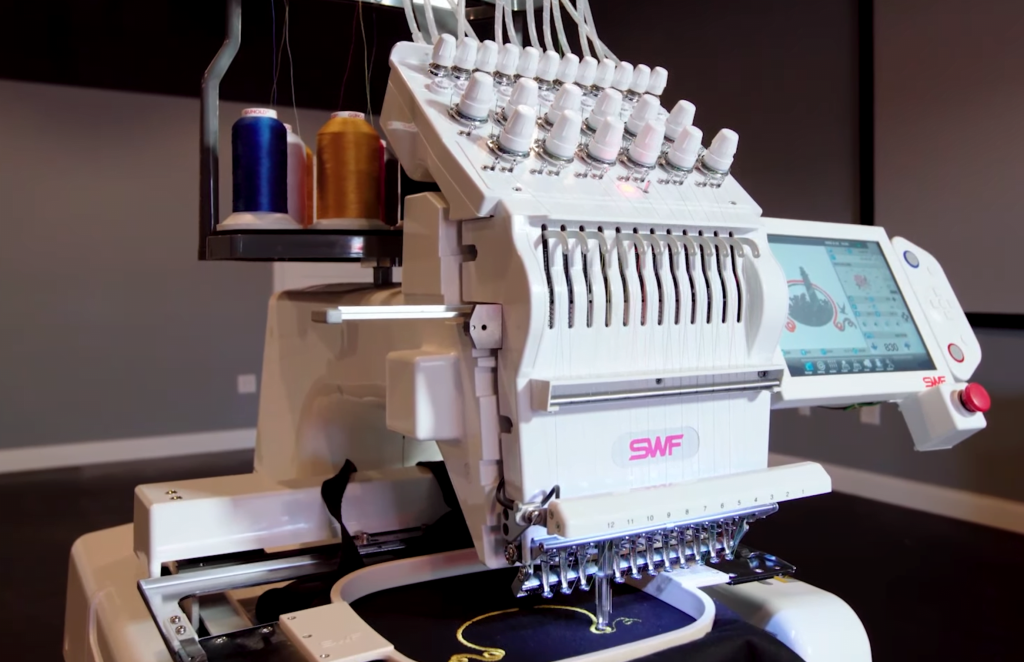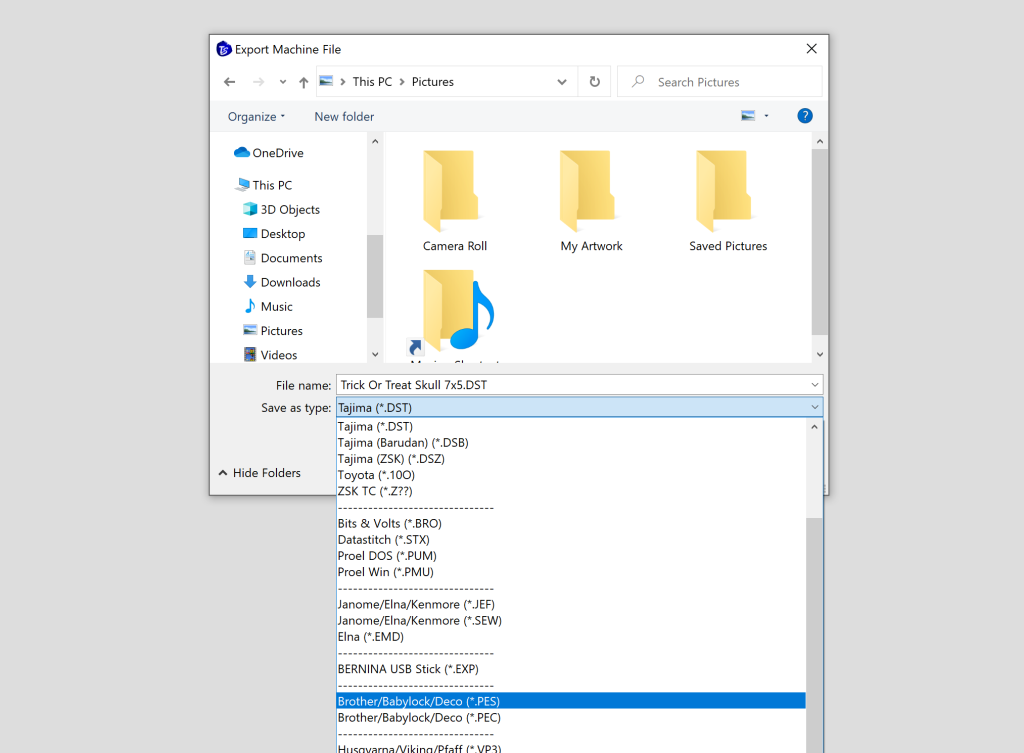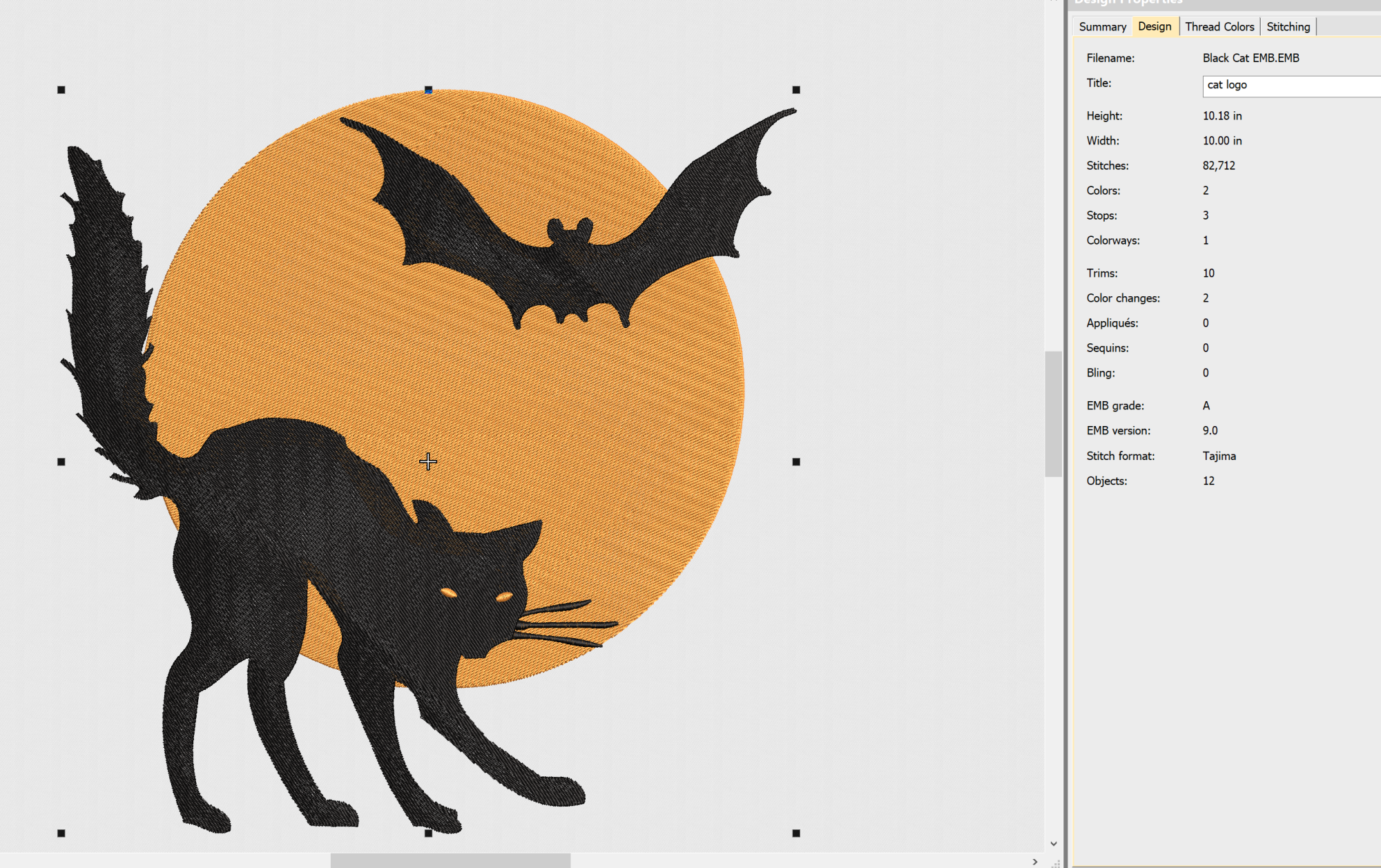While machine embroidery seems straightforward, there are actually a lot of situations where you’ll need to determine yourself what to use for each project. One of those situations involves machine embroidery needles! There are quite a few kinds of needles out there in varying sizes and for different purposes.
In this article, we’ll be talking about machine embroidery needles. You’ll learn what each needle is for, and I’ve also provided a handy chart that will tell you when and where to use each type of needle. Let’s get crafting!
Types of Machine Embroidery needles
Standard Embroidery Needles
Sharp
Sharp needles, also known as universal needles, have a slender and pointed tip designed for piercing through woven fabrics with precision. These needles are ideal for intricate embroidery designs on fabrics like quilt cotton, linen, and other tightly woven materials.
The sharp point allows for clean and precise stitches, making it a go-to choice for detailed work. If your embroidery project involves delicate or transparent fabrics like chiffon or silk, a sharp needle is well-suited to handle the intricacies without causing snags or damage.
Ballpoint
Ballpoint needles are specifically crafted for knit fabrics, offering a slightly rounded tip that slides between the fibers instead of piercing them. This design prevents snags and damage to the fabric, making ballpoint needles suitable for materials like jersey, fleece, and other stretchy textiles.
If you’re working on embroidery projects involving knit garments or elastic fabrics, a ballpoint needle is the preferred choice. It ensures a smooth embroidery process without compromising the integrity of the material.
Wedge/Leather
Wedge needles, often referred to as wedge point or wedge-shaped needles, are versatile and suitable for a range of fabrics. They have a unique point that allows for easy penetration of various materials, including woven and knit fabrics.
Wedge needles are particularly useful when embroidering on multiple layers or dense fabrics like denim. The wedge shape contributes to better fabric penetration and helps prevent skipped stitches. Additionally, the wedge needle’s strength and stability make it an excellent choice for embroidery on leather.
Specialty Needles
The needles above are the standard ones you might need based on fabric type, but there are also some specialty needles that are required in some circumstances. Let’s talk a bit about those!
Metallic Needles
Metallic needles are designed to handle embroidery threads with metallic components, which can be challenging due to their texture. These needles have a larger eye to accommodate the metallic thread, reducing friction and the likelihood of breakage. This article has some tips on using metallic threads.
Embroidery Needles with Teflon Coating
Teflon-coated needles reduce friction between the needle and the fabric, minimizing the chances of thread breakage or skipped stitches. These needles are especially useful when embroidering on sticky materials or fabrics with adhesives. The Teflon coating facilitates smoother thread flow, enhancing the overall stitch quality.
Topstitch Needles
Topstitch needles have an extra-large eye, making them suitable for heavier threads. This needle type is ideal for bold embroidery designs or when working with thicker threads that might not fit through a standard needle. Topstitch needles provide ample space for the thread to move freely, reducing tension-related issues.
Wing Needles
Wing needles, also known as hemstitch needles, create eye-catching openwork and decorative stitching. The needle has wide wings on each side that part the fabric threads, producing a lacy effect. Wing needles are popular for heirloom and decorative embroidery, adding intricate patterns to fabric.
Machine Embroidery Needle Sizes
Below you’ll find a chart detailing specific needle sizes for each fabric type and for different machine embroidery thread weights. You can use this chart as a guideline for selecting the appropriate needle for your projects.
Embroidery Needle Sizes For Different Fabrics
| Fabric Type | Needle Size/Point (Home) |
|---|---|
| Delicate/Transparent Fabrics (ie. silk or chiffon) | 9/65 to 10/70 (ballpoint) |
| Lightweight Woven Fabrics (ie. linen, cotton, and cotton blends, ) | 11/75 to 12/80 (sharp point) |
| Knit Fabrics (ie. fleece) | 11/75 to 12/80 (ballpoint) |
| Elastic Fabrics (ie. Lycra) | 11/75 to 12/80 (ballpoint) |
| Medium-Weight Woven (ie. wool) | 12/80 to 14/90 (sharp point) |
| Active Sportswear/Double Knits | 14/90 (ballpoint) |
| Heavyweight Fabrics (canvas, heavy denim, vinyl) | 14/90 to 16/100 (sharp point) |
| Leather | 10/70 to 14/90 (sharp or wedge point) |
Embroidery Needle Sizes For Different Thread Sizes
| Thread Type and Weight | Needle Size (Home) |
|---|---|
| Rayon (60 Wt.) | 9/65 or 8/60 |
| Rayon (40 Wt.) | 11/75 or 12/80 |
| Rayon (30 Wt.) | 11/75 or 12/80 |
| Polyester(60 Wt.) | 9/65 or 8/60 |
| Polyester (40 Wt.) | 11/75 or 12/80 |
| Polyester (30 Wt.) | 14/90 |
| Metallic (50 Wt.) | 11/75 |
| Metallic (40 Wt.) | 11/75 or 80/12 |
| Metallic (30 Wt.) | 14/90 |
| Metallic (20 Wt.) | 14/90 to 16/100 |
| Cotton (50 Wt.) | 9/65 |
| Cotton (30 Wt.) | 14/90 |
| Wool (12 Wt.) | 16/100 |
When should you change your needles?
Machine embroidery needles obviously don’t last forever. You’ll need to change them out to keep stitching at optimal efficiency, but when should you swap them out? Well, that depends on some factors, but on average, you’ll want to change them after 8 – 10 hours of stitching time.
However, there are some other situations where you might be putting more stress on your needles than normal, and in these cases you may need to change them out a little earlier.
Fabric Types Used
Different fabrics exert varying degrees of stress on needles. When working with abrasive or dense materials like denim or leather, needles may dull more quickly. Pay attention to signs of wear, such as skipped stitches or snags, as they indicate the need for a needle change.
Thread Types Used
Specialty threads, such as metallic or heavy threads, can cause more wear on needles due to their unique textures. If you notice thread breakage, shredding, or inconsistent stitches, it may be time to replace the needle. Matching the needle to the thread type is essential for optimal performance.
Project Complexity
Intricate designs with dense stitching or designs that involve a high number of stitches per minute can accelerate needle wear. Complex projects may necessitate more frequent needle changes to maintain consistent stitch quality and prevent potential damage to the fabric.
How do you know it’s time to change the needle?
Okay, so how do you know when it’s time to change the needle? Here are some signs to look out for.
Check for visible damage
Examine needles regularly for visible signs of damage. Bent or broken needles can harm the embroidery machine and lead to uneven stitches. If you notice any deformation or breakage, change the needle immediately.
Check your stitch quality
Pay attention to the quality of stitches. If you observe skipped stitches, uneven tension, or loops, it’s a clear indication that the needle may be compromised. Changing the needle can often resolve these issues and improve overall embroidery results.
PS. Need some more help with maintaining your embroidery machine? Check out our embroidery machine maintenance guide and keep your embroidery machine going strong!

Barb, our resident quilter and embroidery aficionado, weaves a thread of creativity through our collection. Serving as the curator of machine embroidery content, Barb infuses each design with a touch of her artistic expertise. The free embroidery patterns you discover on our site often bear the mark of Barb’s craftsmanship. Let’s get crafting!





